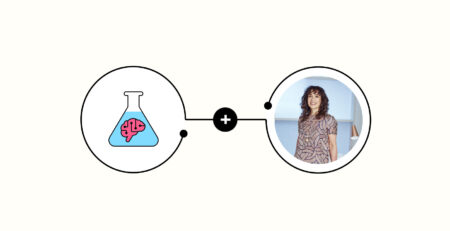Paid search for retailers: three fundamental principles
Times are challenging for retailers. The high street is diminishing; ecommerce is growing; Amazon is looming. There are an exceptional few who can make it without a digital presence, but the majority will most certainly need to double down on their online investment.
There’s a lot to think about in terms of digital strategy, but before delving into anything else, you have to start with paid search. For any retailer, PPC should be at the centre of digital marketing strategy: not only in terms of ad spend, but also as a source of data and insight.
Getting PPC right is not easy but these three principles provide the right foundations.
1. PPC should inform, and be informed by, your wider marketing strategy.
Paid search generates masses of valuable data every second a campaign is running. If you have an effective data strategy in place, you can convert account data into audience sights which are relevant to all marketing channels, and to the business as a whole. PPC performance can also be improved by feeding insights from other sources into your paid search strategy.
Paid search → wider business
Firstly, let’s consider a few client examples of how learning from paid search can inform wider business practices.
- Product strategy: the search market can reveal trends in consumer preferences and behaviour. Insights from search term analysis can be fed back into the business, informing a company’s product offering. For example, with one retail client we were able to provide weekly reports on changes in demand for individual products, which could then be used to make changes to promotions in other advertising channels and their website.
- Offline sales: online advertising can drive offline sales. This concept is fairly established now but the challenge is to adapt paid search strategy to the particularities your physical stores are grappling with. With one client, for example, we vary the use of discount codes according to location, in order to better control the impact this has on local footfall.
- Testing messaging: paid search is a digital laboratory, where tests can be performed every second and millions of results can be processed using automation. Any marketing campaign, as well as any other brand collateral, can be refined by learning from PPC testing. We have developed multiple open source scripts to help advertisers perform keyword analysis, which can then be fed back into wider marketing strategy.
Wider business → paid search
It’s not a one-way street, of course. Paid search performance can be improved by using learnings from other channels and sources of business intelligence. Here’s a few more examples from some of our clients:
- Integrate business and PPC data closely: for several of our retail clients, we use live business data to quickly adjust our bidding strategy. During key periods, for example, we can thus ensure we are as aggressive as possible without breaking the target profit margin.
- Use business intelligence to inform ad copy: there are many quantitative and qualitative ways to understand your audience. Intelligence gathered from surveys, for example, can be converted into actionable changes to ad copy. Particular products, or aspects of the brand that have proven popular in other channels, can be replicated within paid search. This is why cross-channel integration is so important.
Paid search ⇄ wider business
Data from paid search and other channels can be used in combination, too.
- Combining PPC and business data: business data refers here to any data outside of paid search performance, e.g. other marketing channels, offline data. Combining this with data from paid search campaigns can generate valuable insights about such things as product strategy, positioning, and audience insight.
- Integrate paid search and product teams: following on from the above, with some clients we have dedicated platforms for directly sharing information between PPC and product teams. Doing so enables both channels to simultaneously inform the other, which has proven to be extremely valuable in improving performance.
2. Think beyond PPC as a bottom-of-the-funnel channel
Paid search is a fantastic driver of sales, but it can also add value at earlier stages of the customer journey, including branding.
Below is an incomplete list of some alternative PPC strategies, which might help to broaden your horizons.
- Target customers at the research phase: work out the queries customers use when they’re researching the market, and create ad campaigns to target them. For an excellent guide to doing this, I recommend reading this post, and using your imagination. It’s a great way to expand your customer base, potentially drawing in people that had never heard of you before that search.
- Prioritise traffic ahead of sales: for some brands, website traffic can be more important than sales. Consider, for example, a company that is attempting to build a long-lasting relationship with its audience, or one that wishes to control the pace of its revenue growth. Progress in Google’s AI has enabled an impressive amount of flexibility in the way a search campaign is optimised, including ‘Maximise Clicks’ – which is ideal for retailers who don’t just want to drive commerce.
- Use paid search for branding: this is not just about appearing top of the SERP in brand campaigns. PPC can be used to create awareness by bidding on trending keywords, as Ann Summers famously did with the headline, ‘there’s no recession in pleasure’ back in 2010′. PPC can be integrated with other channels to support a wider branding effort.
3. Tailor the automation you use to the needs of your business
Google’s AI is world-leading, take a glance at what’s going on at DeepMind and be amazed. The AI underlying Google’s search console is also amongst the most impressive applications of machine intelligence to date. However, this certainly doesn’t mean that the AI built into Google Ads is the be-all and end-all of paid search management. It is still very much a case-by-case decision, dependent on the specific needs of the business using it.
There are a number of automated bidding strategies, for example, that can be brilliant in some cases and inappropriate in others. I am not going to go into an in-depth discussion of this now (if you’re curious, check out this post I wrote last year on smart bidding). Instead, I’d like to focus on a couple of client examples which illustrate the importance of tailoring automation to your business.
Control is sometimes more important than efficiency
This can be true in many cases. In the early stages of a search account, for example, when there is insufficient data to enable meaningful machine learning. Or when the market is particularly unpredictable, and you need maximum flexibility in your approach. And then there’s brand risk: Dynamic Search Ads (DSAs) are a case in point here. DSAs can produce hilarious, but embarrassing, text ads, that might damage the reputation of a brand.
Sometimes you need to invent your own automation
With one of our clients, there was a real emphasis placed on the cost-effectiveness of their paid search activity. Although Google Ads provides a smart bidding strategy for this type of advertiser (“Target CPA”), it doesn’t allow you to apply this bidding strategy at a product level. If, as is the case at Brainlabs, you have an in-house tech team for these situations, then it’s possible to create your automation that addresses your needs specifically. That’s exactly what we were able to do, and the results were pretty impressive.
Sometimes, using “Target ROAS” or “Maximise Conversions” will be the answer. Other times it won’t. Your job is to develop a knowledge of all the tools available, and an instinct for knowing which one to use in different situations.



